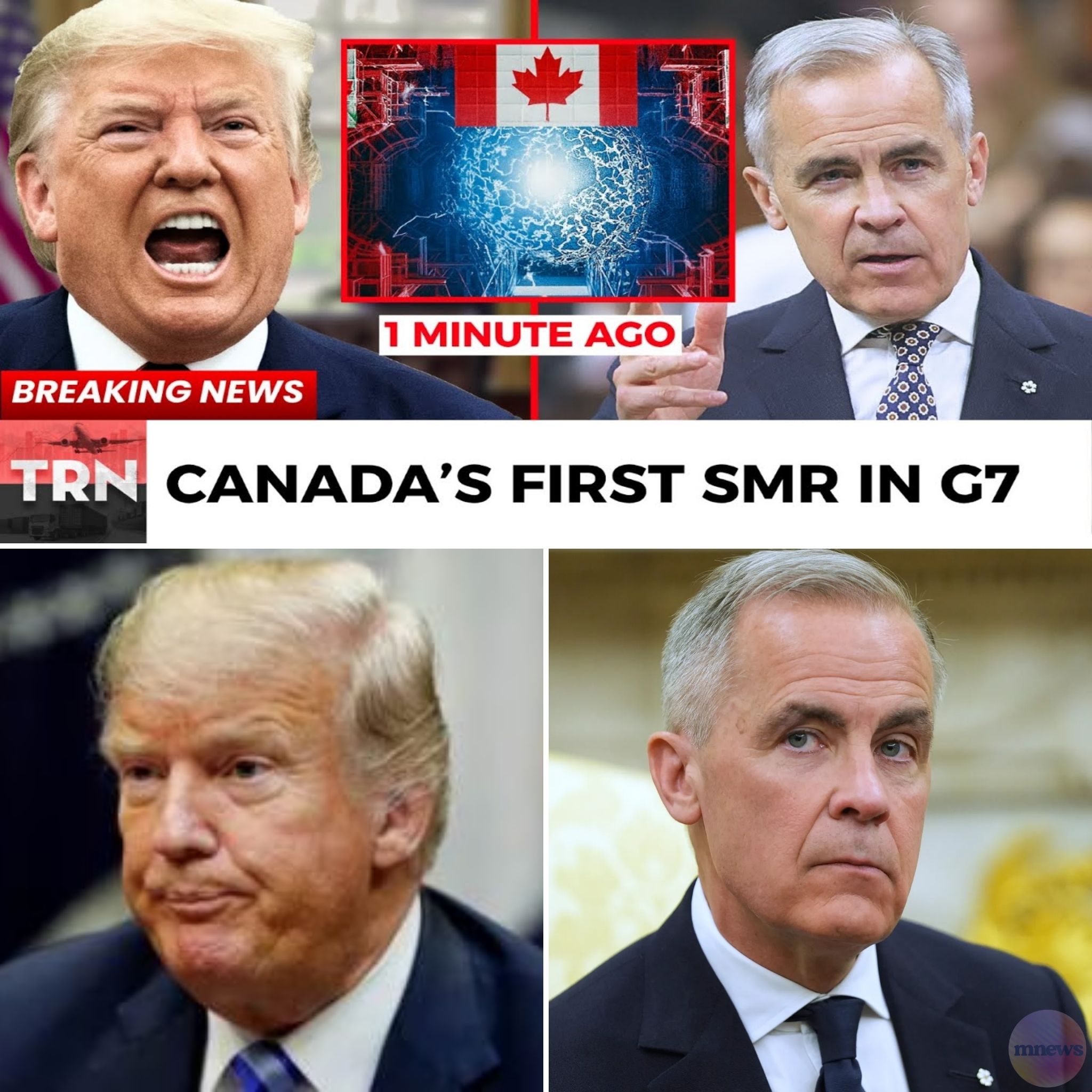Canada has struck a decisive blow against former President Donald Trump’s economic policies with the announcement of the groundbreaking $3 billion Darlington Nuclear Energy Project, positioning itself as a leader in clean energy innovation within the G7. This ambitious initiative, unveiled by Prime Minister Mark Carney and Ontario Premier Doug Ford, marks a pivotal moment in Canada’s industrial evolution and a bold response to U.S. tariffs aimed at undermining its competitiveness.

The Darlington project will introduce four small modular reactors (SMRs) at the existing nuclear site east of Toronto, backed by a hefty $2 billion from the federal government and an additional $1 billion from Ontario’s Building Ontario Fund. This first-of-its-kind venture in the G7 is not just about energy; it represents a strategic pivot towards self-reliance and industrial resilience in the face of aggressive American trade policies.
As the U.S. grapples with the fallout from tariffs imposed by the Trump administration—designed to lure production back to American soil—Canada is seizing the opportunity to reinvent its energy landscape. The SMRs, utilizing GE Hitachi’s cutting-edge BWRX300 technology, promise to deliver clean, stable power at a fraction of the cost and time of traditional nuclear plants. Expected to generate 18,000 jobs and approximately $500 million in local economic activity annually once operational, the project is more than a regional energy solution; it’s a cornerstone of Canada’s national industrial strategy.
The implications of the Darlington project extend beyond Ontario, as provinces like Alberta are now exploring their own nuclear options, signaling a nationwide shift towards nuclear collaboration. Premier Danielle Smith has announced public consultations to integrate nuclear power into Alberta’s energy mix, recognizing the potential for small modular reactors to provide cleaner, more reliable energy for its oil sands operations.
This strategic move is particularly poignant given the backdrop of U.S.-Canada relations. While Trump’s tariffs aimed to weaken Canada’s economic standing, they have inadvertently catalyzed a rapid reindustrialization within Canada. The country is transforming from a raw material supplier to a powerhouse of advanced energy infrastructure, with nuclear energy emerging as a central pillar of its economic identity.
As Canada accelerates its path to energy independence, the Darlington project serves as a powerful reminder of the resilience and ingenuity of the Canadian spirit. In a world where energy stability is paramount, Canada is not just keeping pace; it is setting the standard. The reactors rising at Darlington symbolize a declaration of independence, showcasing Canada’s commitment to a sustainable future while deftly countering the economic pressures from south of the border.
In the contest of economic strategies, Canada is proving that patience and innovation can triumph over confrontation. As the nation embraces this new chapter in its energy story, it stands poised to redefine its role on the global stage, emerging as a formidable energy superpower in the process.





